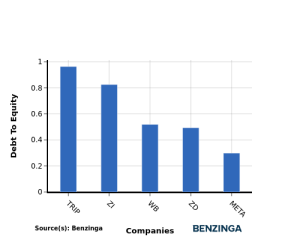A little over two months ago, on Aug. 14, investors received what can arguably be described as the most important data release of the third quarter — and I’m not talking about any inflation report.
No later than 45 calendar days following the end to a quarter, institutional investors with at least $100 million in assets under management (AUM) are required to file Form 13F with the Securities and Exchange Commission. This filing tells investors which stocks, exchange-traded funds (ETFs), and occasionally options, Wall Street’s top money managers purchased and sold in the latest quarter (in this case, the June-ended quarter).
As you might imagine, professional and everyday investors are particularly interested in seeing how Wall Street’s smartest asset managers are approaching artificial intelligence (AI) stocks. AI has been the hottest trend over the last two years, with the analysts at PwC expecting this technology to provide a $15.7 trillion boost to the global economy by 2030.
Interestingly, 13Fs from the second quarter show that billionaire investors, including Citadel’s Ken Griffin, have a mixed view of the companies powering the AI revolution.
Since its inception in 1990, Citadel’s hedge fund has been more successful generating investment gains than any other hedge fund. It’s why investors wisely pay attention to what Griffin and his team are buying and selling.
During the June-ended quarter, Griffin oversaw the disposition of a sizable percentage of his fund’s stake in market-leading AI stock Nvidia (NASDAQ: NVDA), but chose pile into another AI company that appears to have a virtually insurmountable moat.
Let me preface this discussion by pointing out that Citadel is an active hedge fund with countless positions, and it often hedges its common stock holdings with put and/or call options. With this being said, perhaps no sell-side activity stood out more during the second quarter than Griffin and his crew shedding 79% of their fund’s stake in Nvidia.
Since 2023 began, Nvidia’s stock has gained 844%, as of the closing bell on Oct. 18, 2024, and tacked on close to $3 trillion in market cap. These are never-before-seen gains from a market-leading business, which suggests that profit-taking played at least some role in Citadel reducing its sizable position. But there’s a reasonable chance this selling activity is about more than benign profit-taking.
To start with, competition is coming at Nvidia from all angles. Rival chipmakers are developing and ramping production of AI-graphics processing units (GPUs) designed to complete with Nvidia’s ultra-popular H100 GPU and next-generation Blackwell GPU architecture. Although Nvidia’s hardware shouldn’t have any trouble maintaining a computing advantage in AI-accelerated data centers, competing chips are cheaper and may be easier for businesses to get their hands on.

